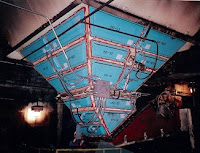 |
| Thermocouple attachment unit (TAU) used for creating thermocouples quickly and inexpensively, plus welding studs and pins to metal structures. |
Thermocouple attachment units (TAUs) are small, self contained spot welders that achieve superior results for welding thermocouple junctions and attachment. They are portable and are easy to use. Also known as thermocouple welders, these units are provide a capacitive discharge (as the energy source) in a compact, self-contained, hand welding unit. They are designed to form very strong, free standing junctions in just seconds using standard thermocouple wire. There's no need for clamping, bracketing or strapping. TAUs provide a direct bonding method for thermocouples, pins and studs that is quick, easy, and low-cost while still providing accurate temperature measurement.
Thermocouple attachment units continue to enhance their power outputs which creates more potential uses for TAUs. Higher power output opens doors to a broader application base. Higher power TAUs can be used to weld thermocouple pairs but also can be used to weld studs, rods and pins to a wide variety of metal structures. For example, a common use for TAU’s is attaching insulation pins to welding insulation blanket support.
An internal power supply constantly recharges an internal battery giving the operator portability in field thermocouple welding. Readily available controls allow for easy adjustment based on wire size and material.
Thermocouple attachment units offer a very convenient and economical method of forming and attaching thermocouple sensing wires, studs, and pins where and when you need them. Models vary based on requirements. Some models accommodate a greater range of wire sizes and materials, handling wire up to 14 gauge and capable of creating weld junctions in under a second. Because the power supply provides a short recharge interval, multiple welds can be done very quickly (4-6 welds per minute).
For more information on thermocouple attachment units, contact:
Hotfoil-EHS
2960 East State Street Ext.
Hamilton, NJ 08619
Phone # 609.588.0900
Fax # 609.588.8333
Email: dap@hotfoilehs.com
www.hotfoilehs.com








